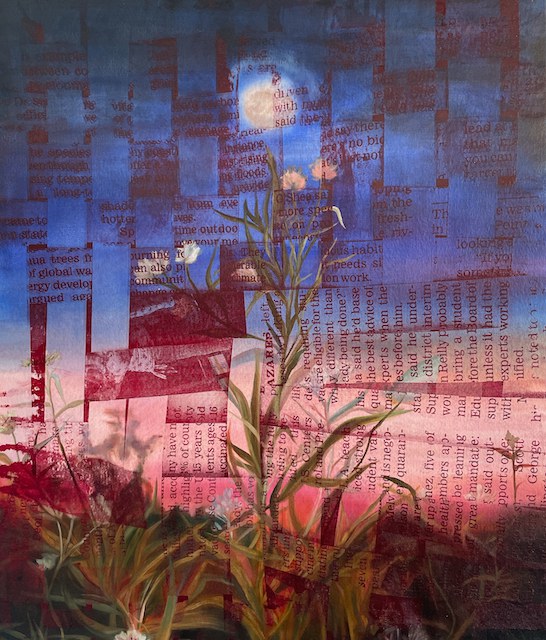Climate change is top of mind for many Californians as atmospheric rivers have brought several storms to the region, along with evacuations, road closing floods, and mudslides. One local artist is addressing climate change through her SoCal-focused work. Jessica Taylor Bellamy uses screen printing, animation, and video to look at LA’s political, social, and environmental structures. Her first solo exhibition, called “Endnotes for Sunshine,” opens on January 21 at Anat Ebgi gallery.
Bellamy says she’s approaching climate change “in a different way that I think has a lot of familiarity to the city, but also is something that is based on real events, and some of the dystopic news we hear. [It’s] also met with fantasy and a little bit of hope and optimism.”

Courtesy of the artist and Anat Ebgi Gallery, Los Angeles.
Her work for this show includes oil paintings using images she’s taken throughout Southern California, on which she screenprints abstracted articles that highlight climate change. She says she enjoys digging for articles, given her background in political science. “I love archiving. … Looking into the past and then speculating about the future has actually been really fruitful.”
She adds, “I'm just constantly capturing that everyday incremental change. And then when I weave those stories about temperature charts or climate change together with paint, and with screen printing, what you get is something that has this reality without the exact realism.”
Bellamy’s research also led her to focus on how climate change can affect people of different income levels. “I've looked at the history of redlining maps versus gentrification in neighborhoods, versus how much shade a certain neighborhood has. And then that actually spawned an entire series of work, painting, and video.”
